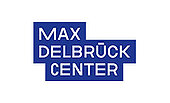Human TCR constructs for adoptive cell therapy of cancer
Keywords
TCR,T-cell therapy,oncology,cancer,tumor antigen,neoantigen,oncovirus
Invention Novelty
The invention provides novel high-affinity T-cell receptors (TCRs) against various tumor and viral antigens for the development of new adoptive T-cell therapies (ATT) of related cancer. Importantly, the human TCRs are derived from unique mouse models, which lack tolerance to human and viral antigens.
Value Proposition
Identifying TCRs that bind tumor antigens with optimal affinity is a key bottleneck in the development of ATT of cancer. Tumor antigens are often self-proteins, and T-cells bearing high-affinity TCRs specific for such antigens are commonly deleted in the thymus contributing to immune tolerance. Similarly, oncoviruses often develop immune escape mechanisms during persistent infection. The present technology offers TCRs isolated from a unique TCR repertoire that has not been educated on normal human self-antigens and is therefore superior in generating and isolating TCRs for human self-antigens by circumventing mechanisms of tolerance. Furthermore, the technology allows for isolation of TCRs against viral antigens and tumor neoantigens. The offered TCRs could be valuable candidates for ATT.
Technology Description
To identify optimal-affinity TCRs, humanized mice with a diverse human TCR repertoire restricted to different human leukocyte antigens (HLA) have been generated. The human TCR α/β-gene loci and HLA gene were integrated, whereas the mouse TCR α/β-gene loci and H2 molecules were inactivated. These mice are immunized with human tumor antigens or viral antigens, for which they are not tolerant, allowing induction of T-cells with optimal-affinity TCRs consisting of fully human sequences. The following proprietary high-affinity TCRs have been developed:
TCRs specific for Rac1 and Rac2 neoantigens
- Recognize HLA-A2-restricted epitopes of mutant Rac1P29S and Rac2P29L and conferred regression of Rac1P29S-positive tumors in a mouse model. The escaping tumor cells were antigen-negative
- Potential use in ATT of melanoma expressing the Rac1/2 mutations
TCRs specific for TGF-beta receptor 2 neoantigen
- Recognize a HLA-DR4-restricted epitope of the frameshift-mutant TGFβR2(-1) and conferred reactivity towards TGFβR2(-1)-expressing colorectal cancer cells
- Potential use in ATT of cancers expressing the TGFβR2(-1) mutation like microsatellite instable colorectal cancer
TCRs specific for CD22 tumor-associated antigen
- Recognize a HLA-A2-restricted CD22 epitope and conferred reactivity towards CD22-expressing target cells
- Potential use in ATT of relapsed / refractory B-cell malignancies, including relapse after anti-CD19 immunotherapy
TCRs specific for HPV antigens
- Recognize HLA-A2-restricted epitopes of the HPV16 antigens E5, E6, and E7 respectively and conferred reactivity towards epitope-loaded cells and HPV-positive cancer cells
- Potential use in ATT of HPV-associated cancers such as cervical cancer
Commercial Opportunity
This opportunity is available for licensing or collaboration.
Development Status
In vitro (and in vivo) characterization of specificity, reactivity, and safety (alloreactivity, cross-reactivity)
Patent Situation
- TCRs specific for Rac1 and Rac2 neoantigens: International patent application WO2022/219155 pending (priority April 2021)
- TCRs specific for TGF-beta receptor 2 neoantigen: International patent application pending (priority February 2022)
- TCRs specific for CD22 tumor-associated antigen: Patent applications pending in AU, CA, EP, JP, US (based on WO2020/127357, priority December 2018)
- TCRs specific for HPV antigens: Patent granted in US (US11401316B2, priority October 2015)
Further Reading
Li et al., Nat Med 16, 1029-1034 (2010)
Immisch et al., Front Immunol 14:1119498 (2023)
Plewa et al., J Immunother Cancer 11(2):e006001 (2023)






